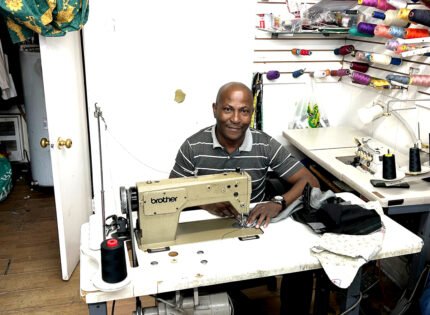Measures such as social distancing, quarantine,
and isolation are not enough
Contact Staff

With close to 57,000 people infected and more than 5,600 deaths Quebec has taken a beating at the hands of COVID-19. Montreal in particular with half the numbers of infections and fatalities has been hit particularly hard by the coronavirus.
But throughout the four months of the once-in-a-live-time public health crisis, the city has for the most part been able to ride out the first wave of the virus, notwithstanding the overwhelming calamity witnessed at long-term residences.
From a mid-April high of more than 800 cases a day to today’s average of just over 100 daily, efforts to flatten the so-called curve continues to be the preoccupation of public health officials in the city and province.
The wearing of mask on public transit and at in-door public spaces has become an important strategy in the fight to keep the coronavirus numbers under control.
Those measures began to go into effect on Monday July 13, when it became mandatory for metro and bus riders aged 12 and over, across the province to wear masks.
Children between ages two and 12 years old are not required to wear them but it is recommended that they do.
For now authorities saw that there are no plans to turn away transit users who are not wearing masks and all efforts will be made to make them available to people.
Montreal public transit authorities have a reported $1.5 million worth of reusable masks to be made available to users for free across the network.
However, in a recent statement Quebec Premier Francois Legault stated that after July 27, no one would be allowed on a bus or to enter the metro without a mask.
But transit users aside, Legault might have difficult time in trying to put in place measures to have Quebecers wear mask in all indoor spaces across the province, which will take effect on Saturday, July 18.
The regulation will apply to almost every Quebecer age 12 and up visiting any enclosed place including restaurants, retail stores, malls and recreational centres.
Exemptions will be considered for those with medical conditions that prevent them from wearing a mask.
For now business owners will be carrying the brunt of the responsibilities for applying the new regulations as they face fines of between $400 and $6,000 for having clients without masks or face-coverings in their establishments.
There’re suggestions that similar fines can apply to individuals as of August 1.
The Quebec government is also reiterating the importance of the two-metre distancing rule.
And urged Quebecers to keeping indoor gatherings to a maximum of 10 people.
While there are a handful of Quebecers questioning the government’s motivations in making mask-wearing mandatory, an increasing number of studies show that airborne transmission might still be the most common way that the virus is transmitted.
One research study show a dramatic downturn in the number of infections in previous global hotspots Italy and New York city, after those jurisdictions made mask wearing mandatory.
In that particular study, those researchers made it clear that measures such as social distancing, quarantine, and isolation are not sufficient to contain the spread of the virus.












